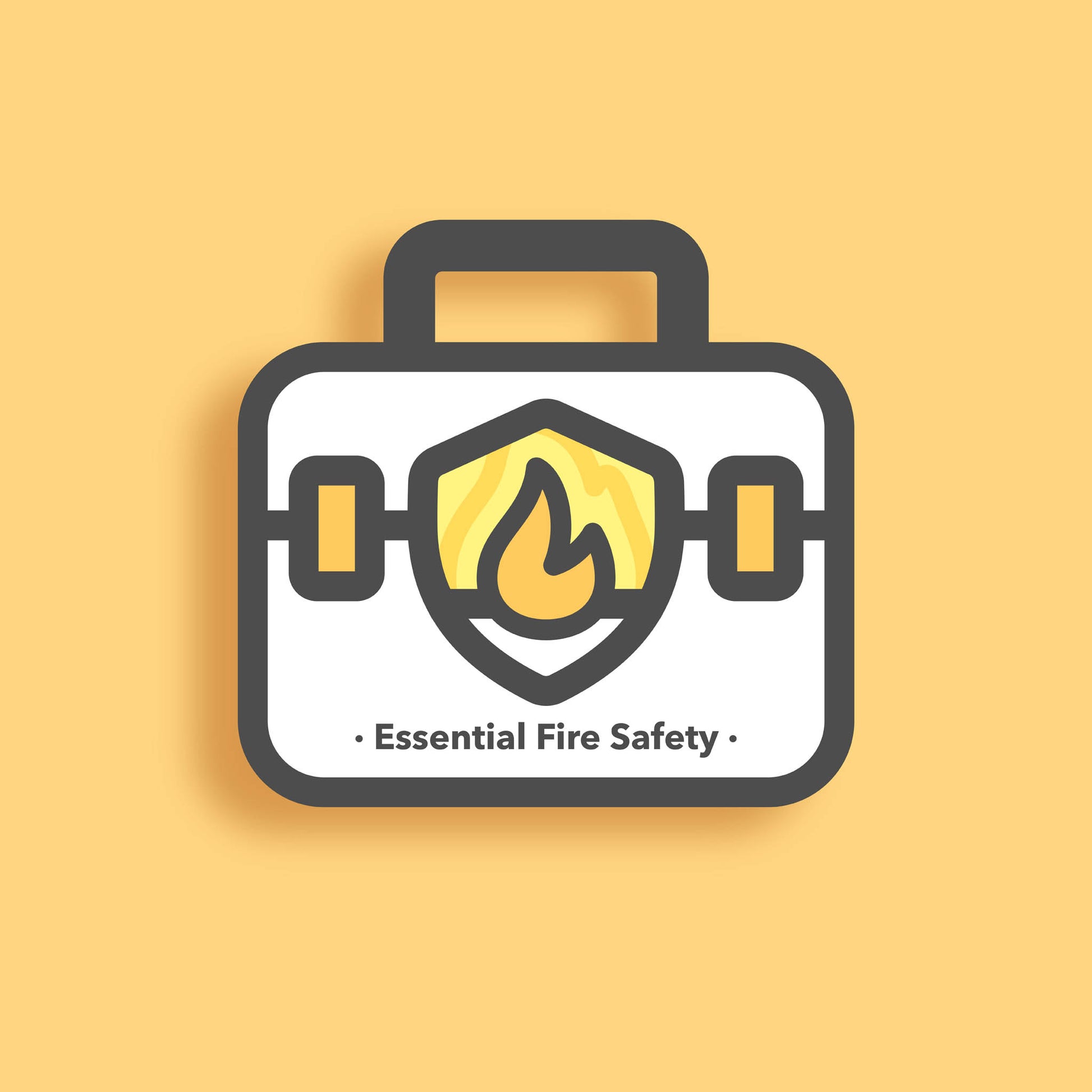
Fire Safety Templates for Business Compliance
Editable fire risk assessments, logbooks, evacuation plans, signage, and guidance to meet legal requirements and protect staff, customers, and property.
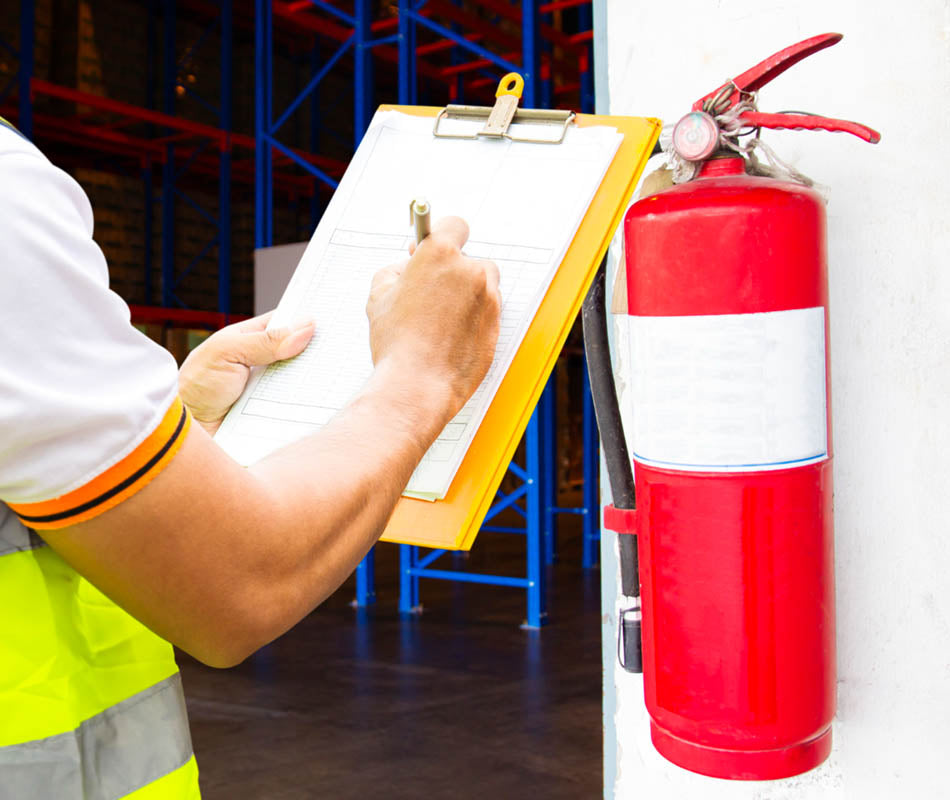
Take Charge of Fire Safety Compliance with Editable Templates
Improve fire safety standards quickly and confidently using our simple, editable templates. Designed for business owners and managers, our fire safety documents include pre-filled risk assessments, checklists, and guidance to help you stay compliant without the complexity. Easy to customise and user-friendly, our templates make fire safety documentation straightforward and efficient.”
Featured Fire Safety Templates...
-
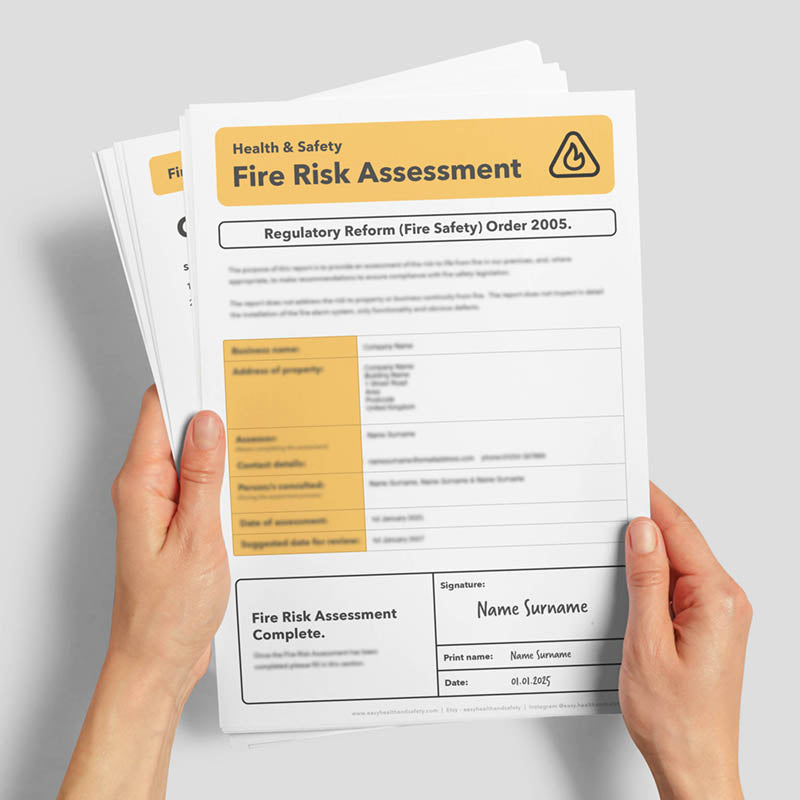
Fire Risk Assessment Template
Shop Fire Safety TemplatesThis fire risk assessment template is a key tool for businesses to conduct comprehensive fire risk assessments. By methodically identifying and evaluating potential fire hazards, businesses can develop strategies to mitigate these risks, ensuring compliance with fire safety laws. The document also includes an action plan to assist in solving any fire related health and safety issues identified by the risk assessment.
-
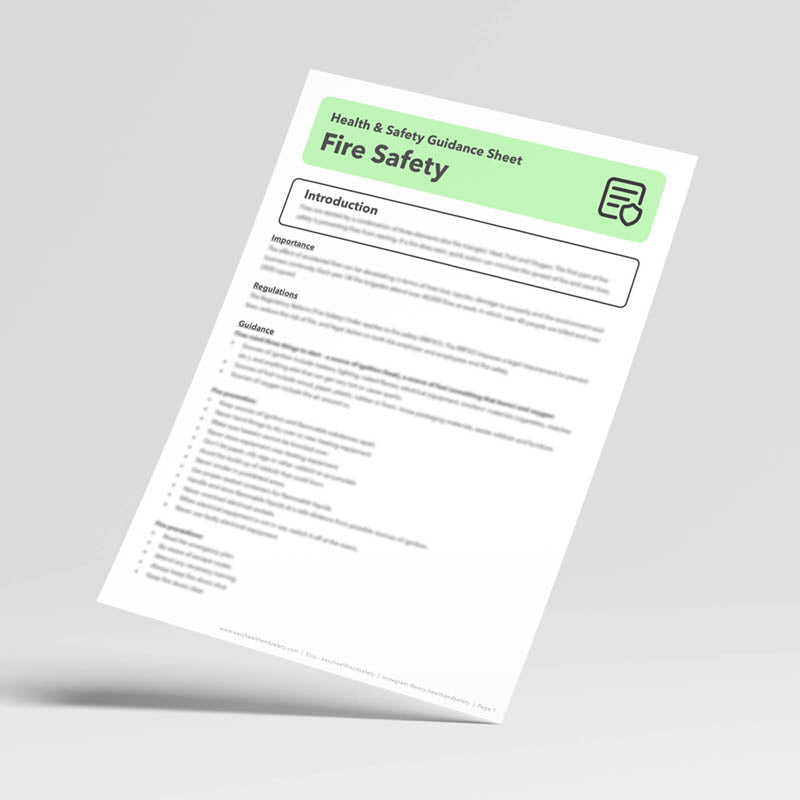
Fire Safety Guidance Sheet
Shop Fire Safety TemplatesThe Fire Safety Health and Safety Guidance Sheet is an essential resource for all businesses no matter the size. It provides detailed information on fire safety best practices in the workplace, offering a clear and concise reference for employers and employees alike. This guidance is crucial in maintaining a safe working environment and ensuring that everyone is aware of their responsibilities.
-
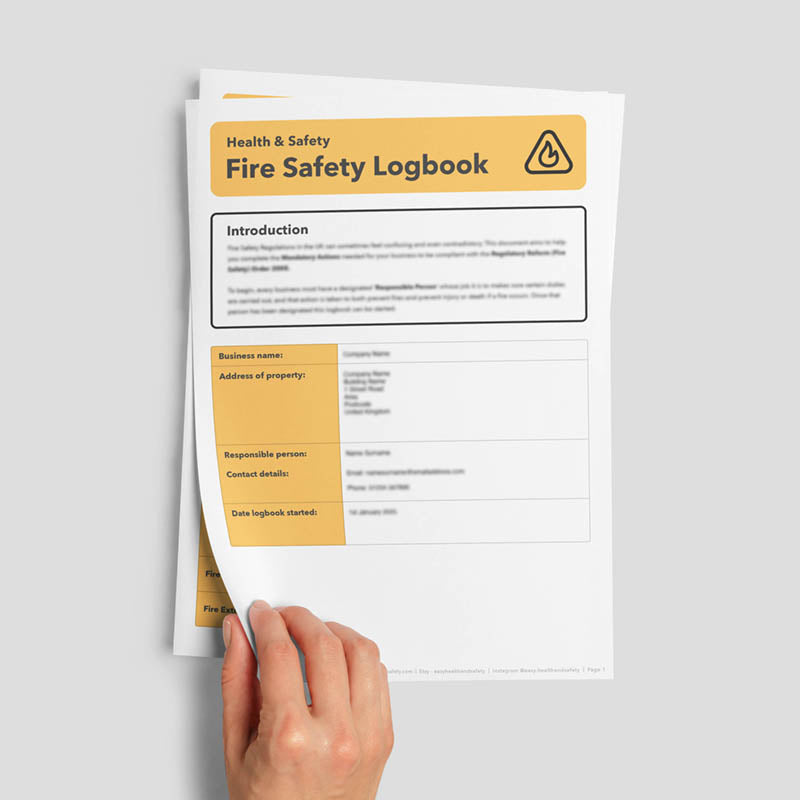
Fire Safety Log Book
Shop Fire Safety TemplatesA fire safety log book is an essential record-keeping tool. It helps businesses document all fire safety-related activities, including risk assessments, equipment checks, training sessions, and fire drills. This documentation is vital for internal reviews and compliance inspections, ensuring that all mandatory actions, such as annual fire drills and weekly fire alarm tests, are properly recorded and maintained.
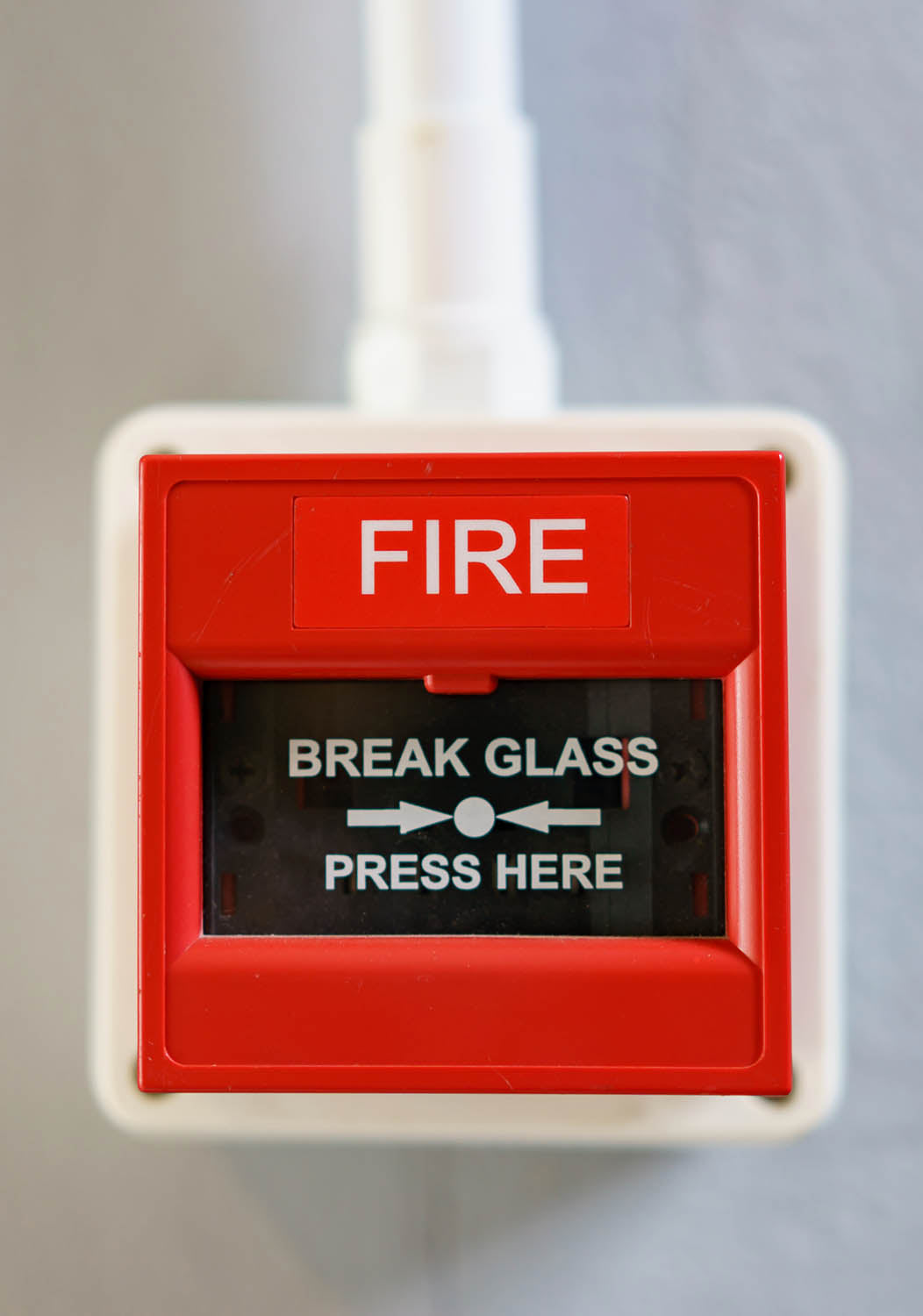
The Importance of Fire Safety for Businesses
Fire safety is an integral aspect of business operations full stop. It not only ensures the well-being of employees and customers but also protects property and sustains business continuity. Adherence to health and safety laws and regulations is not merely a legal obligation; it is a fundamental responsibility of every business entity.
Your Responsibility as a Business Owner
If you are responsible for a building, for example an employer, owner or occupier of a premises that isn’t a single private dwelling (a private home), by law you must carry out a fire risk assessment to ensure your premise has adequate fire safety measures and equipment in place. In support of the fire risk assessment, you must also carry out a number of mandatory actions, such as an annual fire drill, weekly fire alarm tests and more. These can be done using a fire safety log book.
Understanding Fire Safety Laws
At the heart of fire safety legislation is the Regulatory Reform (Fire Safety) Order 2005, applicable in England and Wales. Scotland and Northern Ireland have their own fire safety regulations, but all share a common objective: to reduce the risk of fire hazards. These regulations mandate a thorough risk assessment to identify potential fire hazards and implement appropriate safety measures.
Conducting Fire Risk Assessments
A fire risk assessment is the first step in fire safety. It involves identifying fire hazards, evaluating the risks to people from fire, and implementing measures to mitigate these risks. Regular assessments are essential, especially when there are significant changes in the workplace.
Implementing Fire Safety Measures
Key safety measures include ensuring proper fire detection systems, maintaining clear escape routes, and providing fire-fighting equipment. Staff training on fire safety procedures is crucial. Employers should ensure employees know how to respond in the event of a fire, including understanding evacuation plans and the use of fire extinguishers.

Why pay expensive consultant fees when you can manage fire safety yourself?
The Benefits of Managing Fire Safety Yourself...
-

Improve safety
You know your workplace best. Focusing on fire safety in your work environment helps prevent fires and related hazards by assessing activities and implementing measures to mitigate risks.
-

Increase compliance
Our ready to use fire safety templates, which come with pre-filled examples to make the process easier, will enable you to quickly increase your compliance to health and safety laws and regulations.
-

Save money
With health and safety consultants often charging upwards of £400 per day, implementing health and safety measures can often be a burden. Take control and save your business time and money.
Featured Product
Essential Fire Safety Template Bundle
Boost your business's fire safety standards with the Essential Fire Safety Template Bundle. Containing a selection of essential templates including a fire risk assessment, fire safety log book, guidance sheet and signage, it's intended to help you increase your business's fire safety compliance without the expense of employing a health and safety consultant.
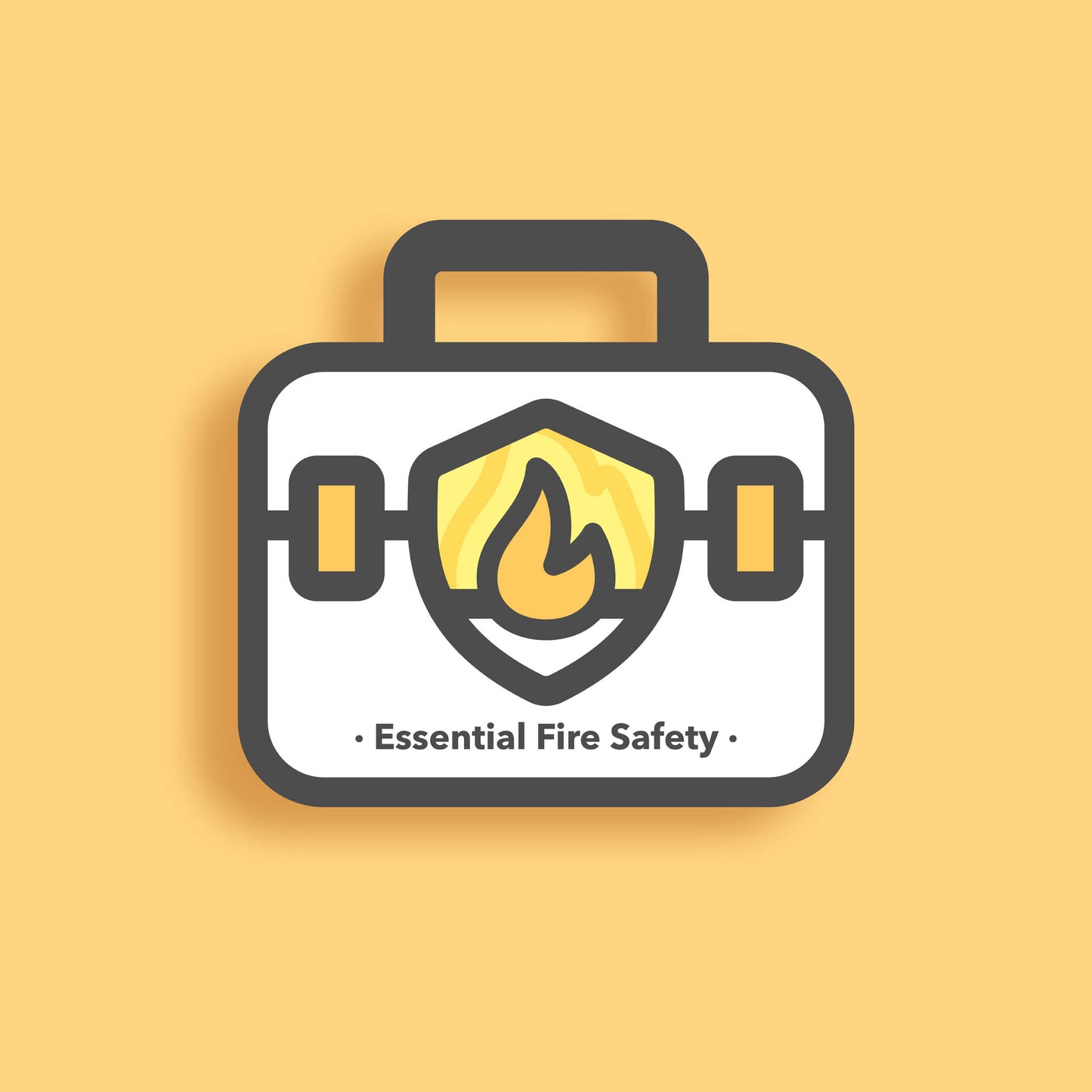
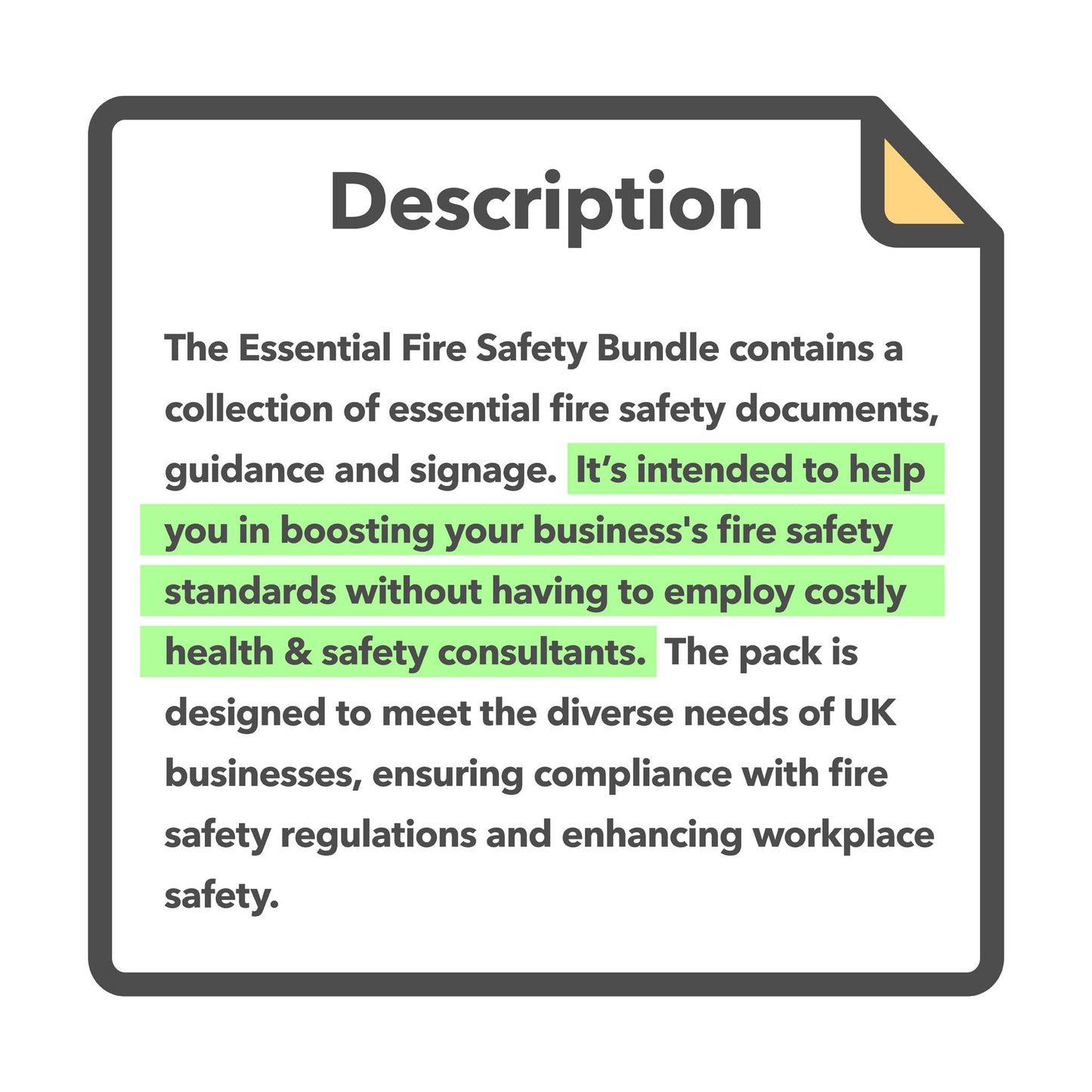
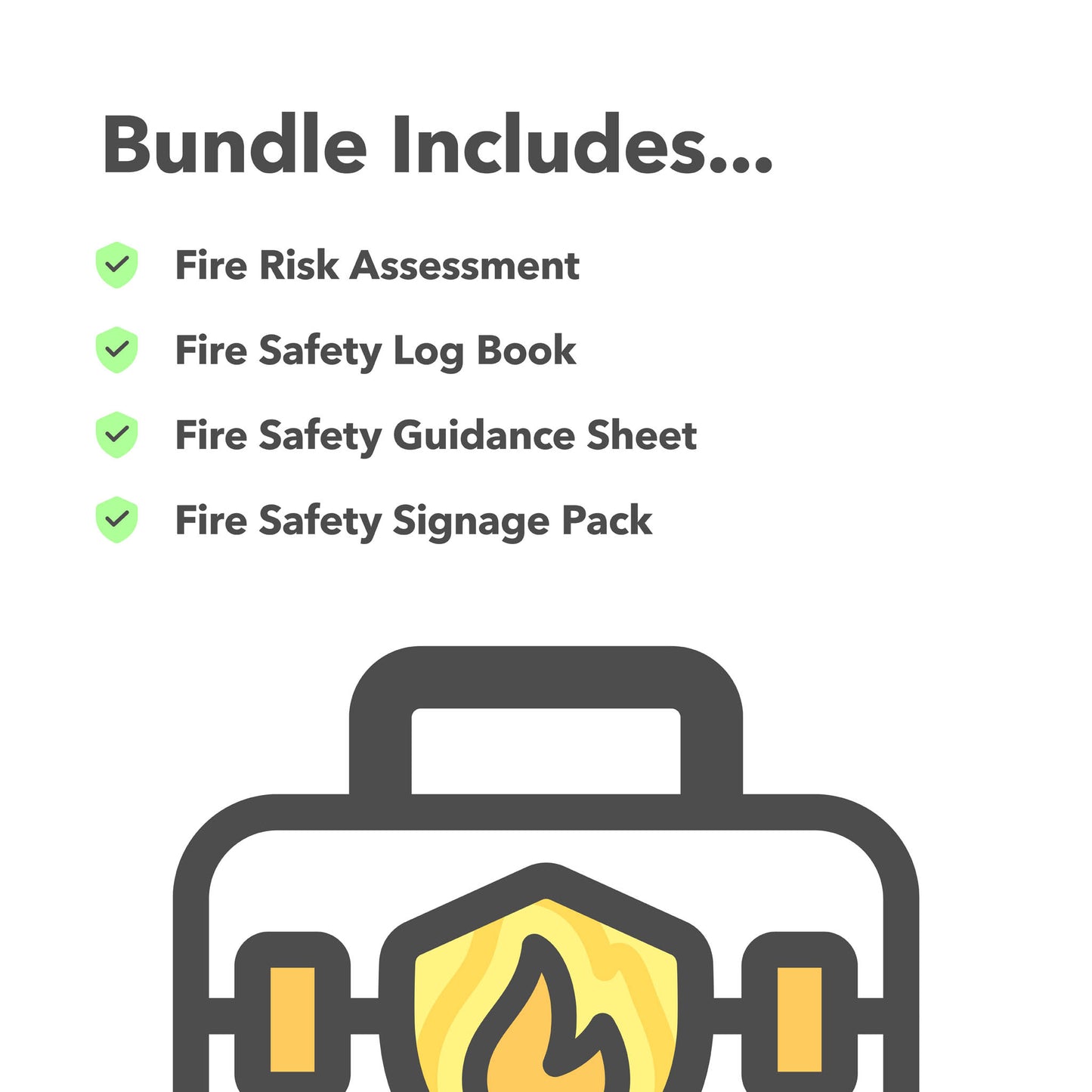
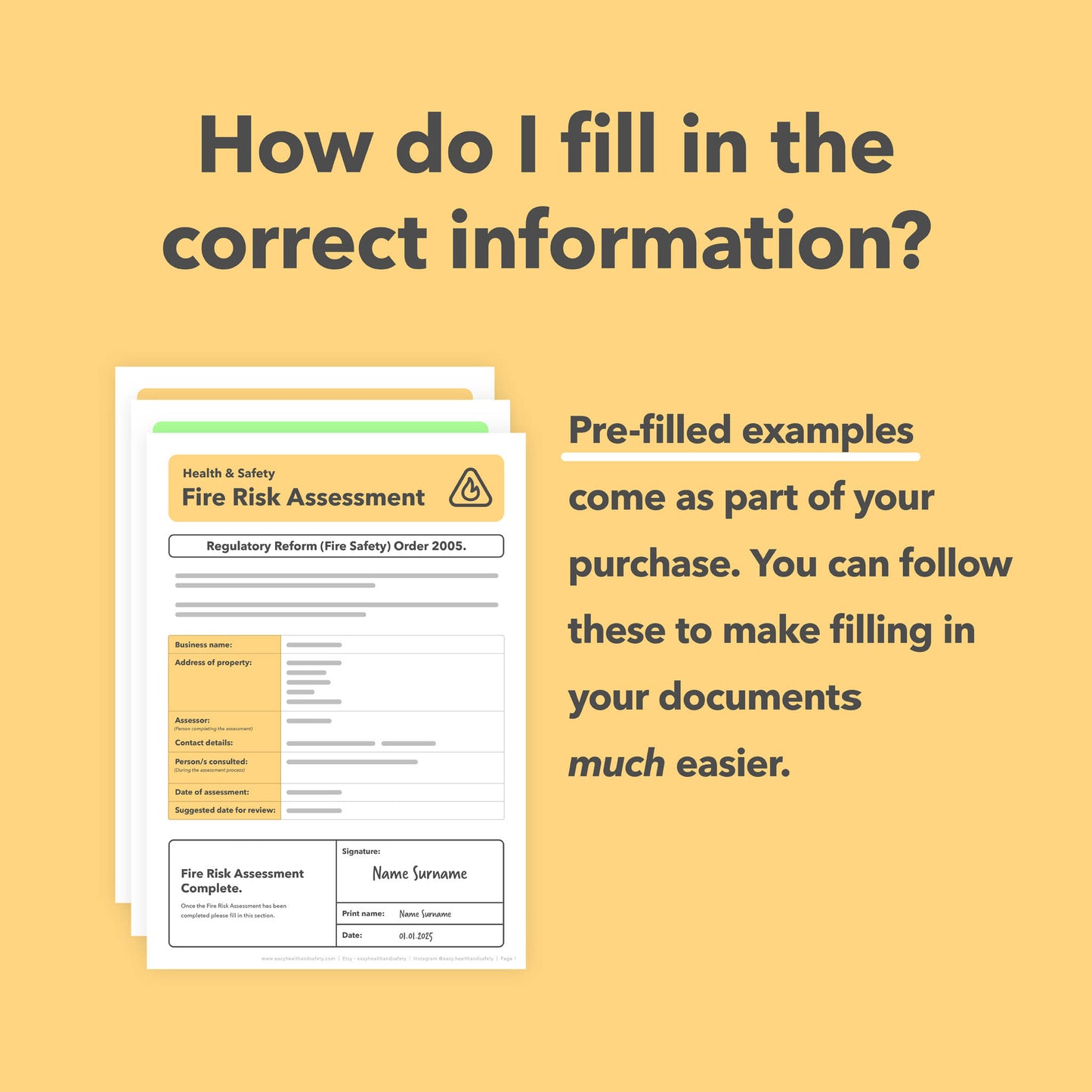




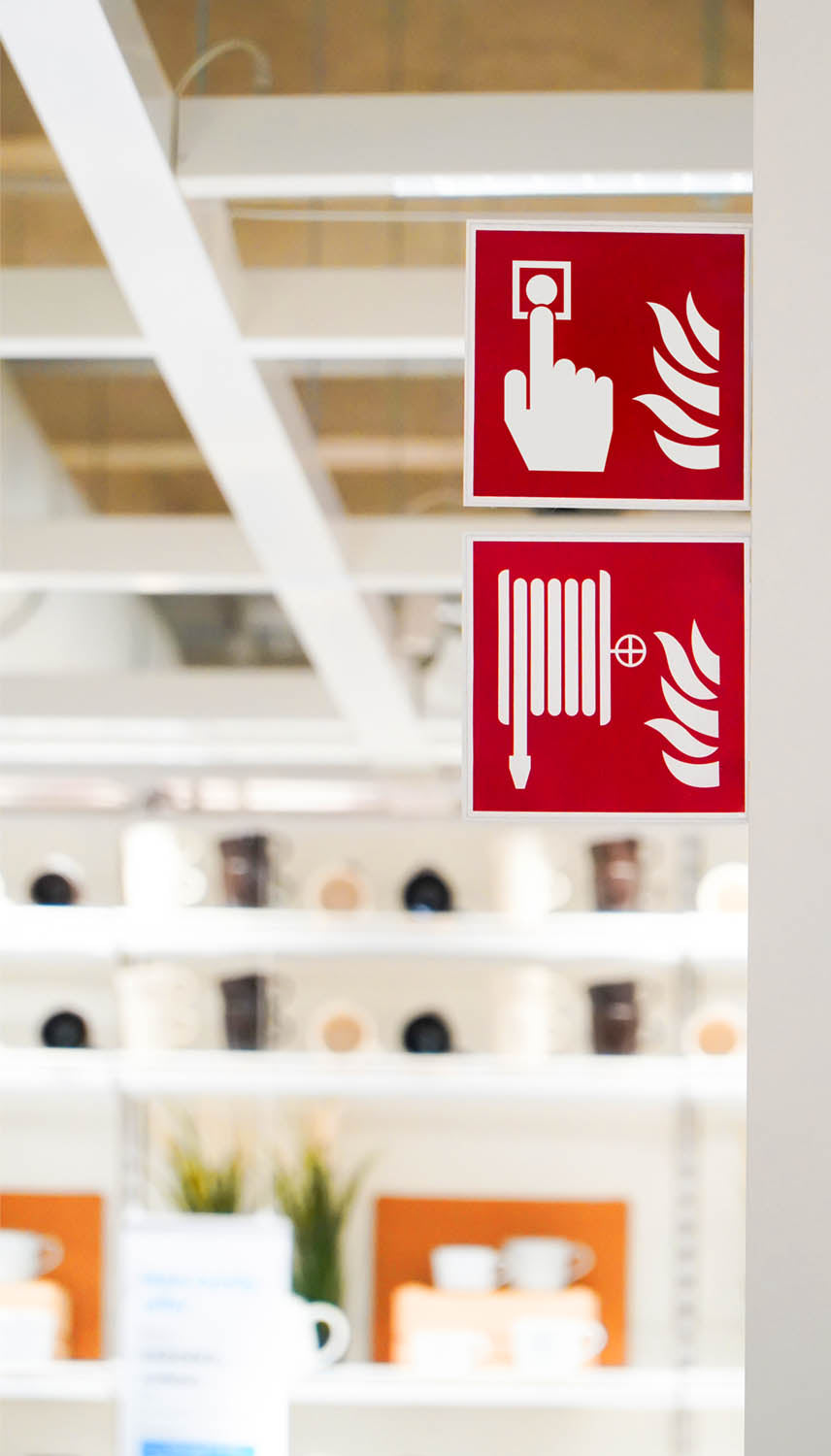
Mastering Fire Safety: A Quick Guide for Employers
Legal Responsibilities of Employers
Employers are legally responsible for fire safety in their premises. This includes maintaining all fire safety equipment, conducting regular fire drills, and ensuring that all staff are aware of fire procedures. Non-compliance with fire safety regulations can lead to substantial fines and, in severe cases, imprisonment.
Fire Safety in Different Business Sectors
Fire safety requirements can vary significantly across different sectors. For instance, a manufacturing plant may require more extensive fire safety measures compared to a small office due to the nature of the work and the materials handled.
Insurance and Fire Safety
Adequate fire safety measures can also impact business insurance premiums. Insurers often offer better terms to businesses that demonstrate robust fire safety practices, as this reduces the risk of fire-related incidents.
Technology and Fire Safety
Advancements in technology offer new opportunities for enhancing fire safety. Smart fire detection systems and automated emergency response mechanisms can significantly reduce the risk and impact of fires.
In Summary...
Fire safety is a critical aspect of running any business. Compliance with health and safety regulations not only ensures legal compliance but also fosters a safe working environment. Proactive measures in fire safety can safeguard lives, protect property, and ensure the longevity and success of a business. Every business, regardless of size or sector, should prioritise fire safety as a core component of its operational strategy.
Frequently Asked Questions
Fire Safety Compliance FAQs for Businesses
What should a fire risk assessment include?
A fire risk assessment is a systematic process that involves identifying fire hazards, evaluating the risks to people from these hazards, and implementing measures to mitigate these risks. This assessment should consider various factors, including the type of building, the nature of work conducted, the number of employees, the arrangement of emergency exits, and the presence of fire-fighting equipment. It should also include an evaluation of existing fire prevention measures and their effectiveness. The assessment must be documented, no matter the size of the business, and should be reviewed regularly or when there are significant changes in the workplace.
Who is responsible for fire safety in a workplace?
The designated 'Responsible Person' – typically the employer, owner, or occupier of the premises – is in charge of fire safety. This individual's duties include conducting fire risk assessments, implementing necessary fire safety measures, ensuring the maintenance of fire safety equipment, and providing training to staff. They must also keep an updated fire safety logbook and conduct regular fire drills to ensure preparedness.
What should be included in a fire safety logbook?
A fire safety logbook should comprehensively document all fire safety-related activities and procedures. This includes records of fire risk assessments and their outcomes, details of fire safety equipment checks and maintenance, records of fire drills and staff training sessions, and any incidents or near-misses related to fire. The logbook serves as an essential tool for demonstrating compliance with fire safety regulations and is invaluable during safety audits and inspections. Regular updates to the logbook ensure that it accurately reflects the current fire safety status of the company.
How often should fire safety training and drills be conducted?
Fire safety training should be an integral part of the induction process for new employees and should be regularly updated for all staff. The frequency of training can vary depending on the business's nature and size, but it should generally occur at least annually. Fire drills are also crucial and should be conducted at least once a year, though more frequently in high-risk environments. These drills help familiarise staff with evacuation procedures and identify any areas for improvement in the emergency response plan.
What are the consequences of non-compliance with fire safety regulations?
Failure to comply with fire safety regulations can lead to significant legal and financial repercussions. This includes hefty fines imposed by regulatory authorities and, in cases of severe negligence, criminal prosecution leading to imprisonment. Additionally, non-compliance can result in catastrophic consequences such as loss of life, serious injuries, and substantial property damage, which can further lead to lawsuits, reputational damage, and business disruption.
Does fire safety vary across different business sectors?
Fire safety requirements do vary depending on the business sector. High-risk sectors like manufacturing, chemicals, and hospitality have more stringent fire safety requirements due to the nature of their operations and the materials they handle. These sectors often require specialised fire safety equipment, additional training for staff, and more frequent risk assessments. In contrast, lower-risk environments like small offices may have less extensive requirements but still need to maintain basic fire safety standards.
What is the role of fire safety signage?
Fire safety signage is crucial for emergency preparedness. It includes signs that clearly mark fire exits, escape routes, and the location of fire-fighting equipment like extinguishers and fire blankets. These signs play a vital role in guiding individuals safely out of the building in an emergency, particularly in unfamiliar or complex environments. Proper signage is not just a legal requirement but a critical component in ensuring the safety of everyone in the building.
Can fire safety measures affect business insurance?
Implementing robust fire safety measures can have a positive impact on a business's insurance premiums. Insurance companies often assess a business's risk level when determining premiums, and a strong commitment to fire safety can indicate a lower risk profile. This can result in more favourable insurance terms and potentially lower costs. Additionally, demonstrating a proactive approach to fire safety can be beneficial in the event of an insurance claim related to fire damage.
How can technology improve fire safety?
Technological advancements have significantly enhanced fire safety capabilities. Innovations like smart fire detection systems can provide early warning of potential fire incidents, often identifying risks before they escalate. Automated emergency response systems can also facilitate quicker and more coordinated responses, potentially saving lives and reducing property damage. Technology also plays a role in training, with virtual reality and digital simulations providing immersive and practical fire safety training experiences.
What are the legal requirements for businesses in terms of fire safety?
Businesses must adhere to the Regulatory Reform (Fire Safety) Order 2005 (applicable in England and Wales), and similar legislation in Scotland and Northern Ireland. This legislation requires businesses to carry out comprehensive fire risk assessments to identify potential hazards. Employers must establish fire safety policies, implement and maintain fire safety measures (like alarms and extinguishers), and ensure clear evacuation routes. Regular staff training on fire procedures is also mandated. Non-compliance can result in legal consequences, including fines and, in severe cases, imprisonment.
Improve fire safety measures across your business with our Essential Fire Safety Template Bundle.





